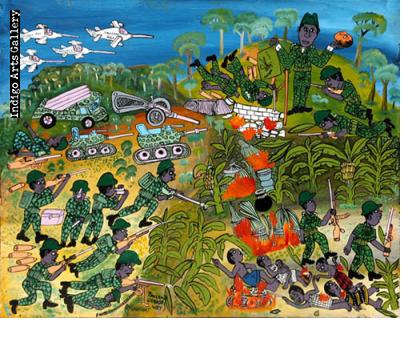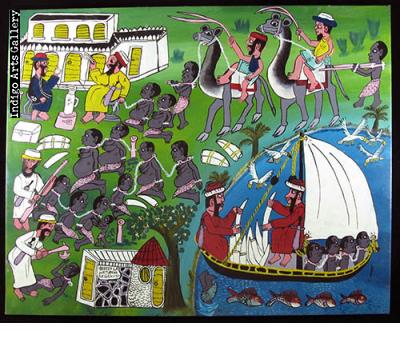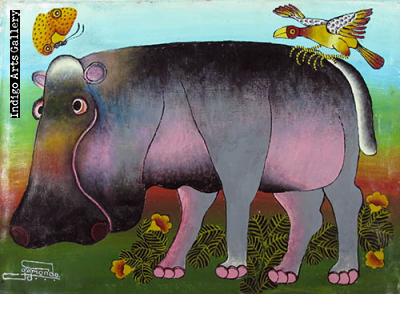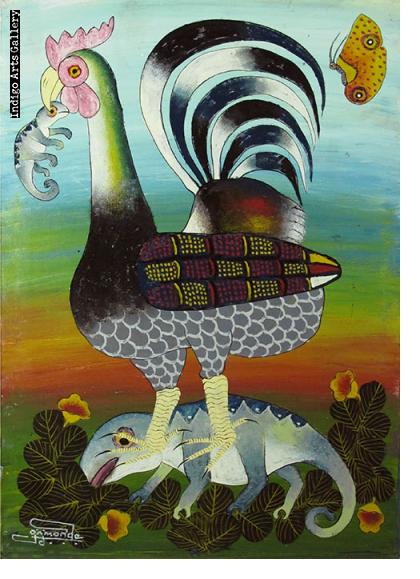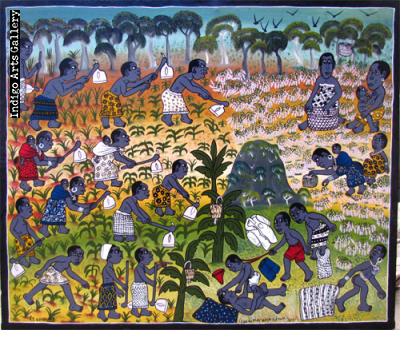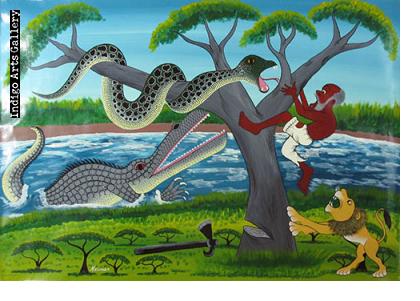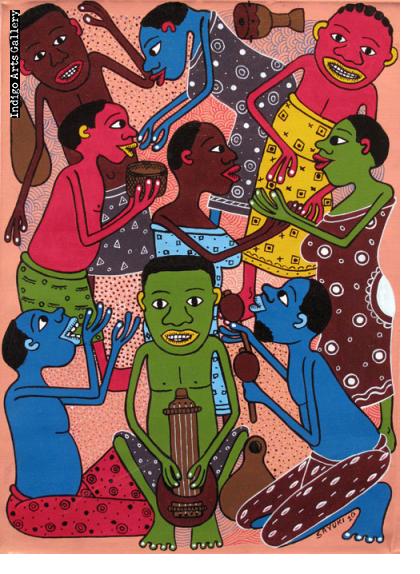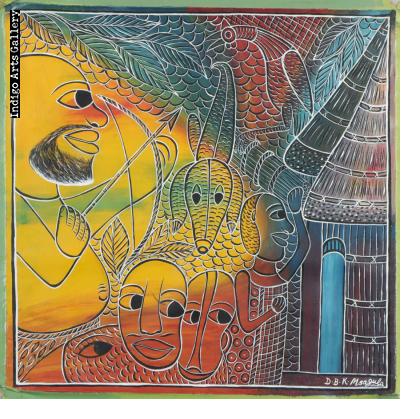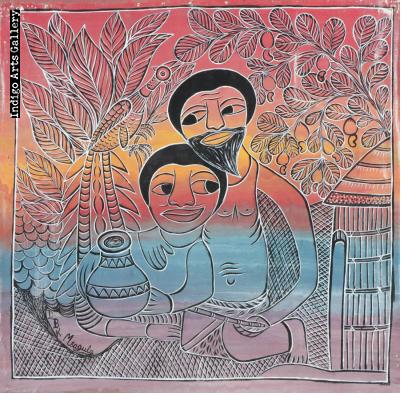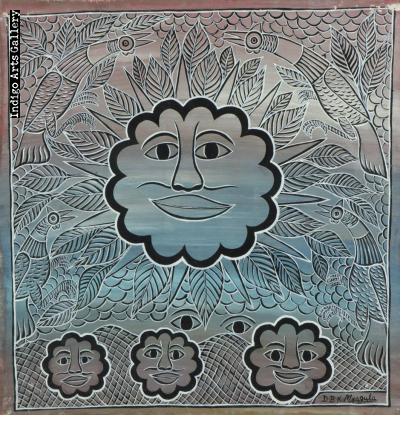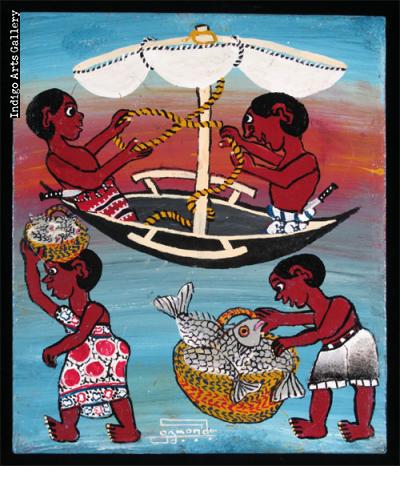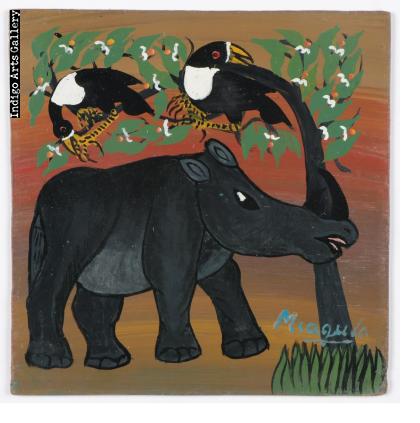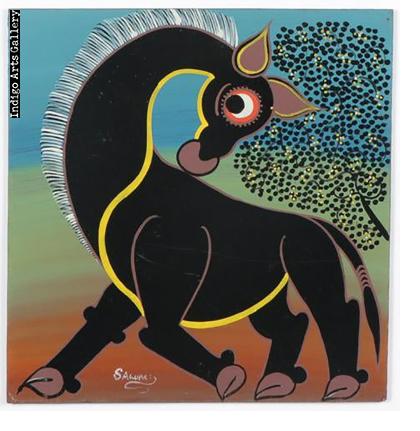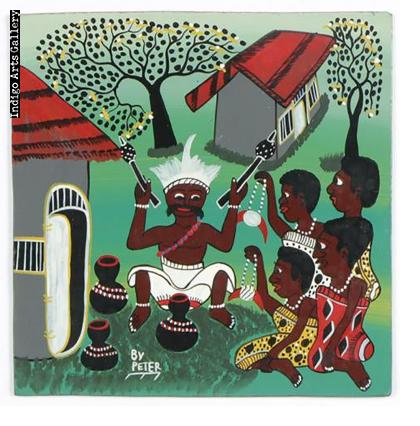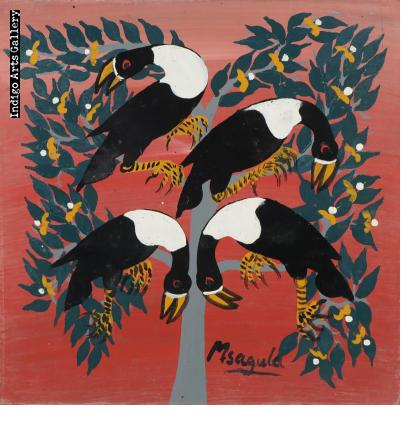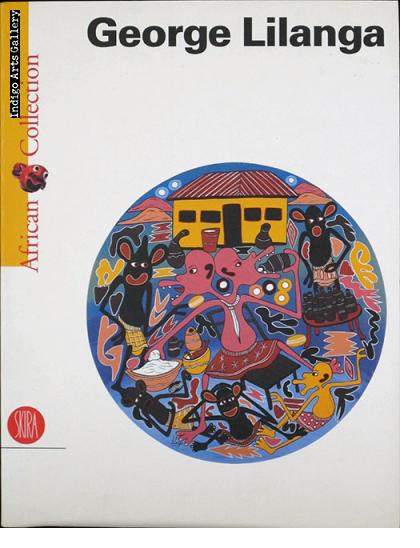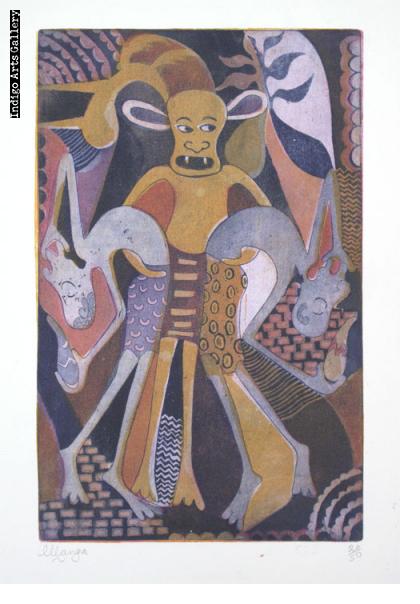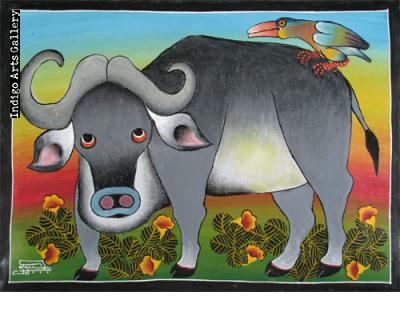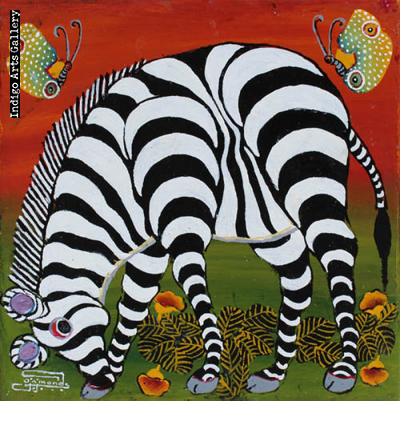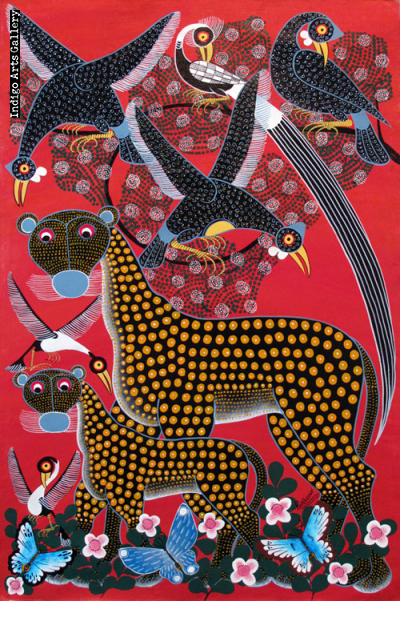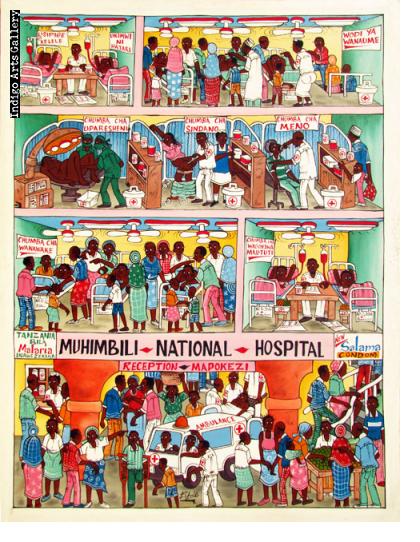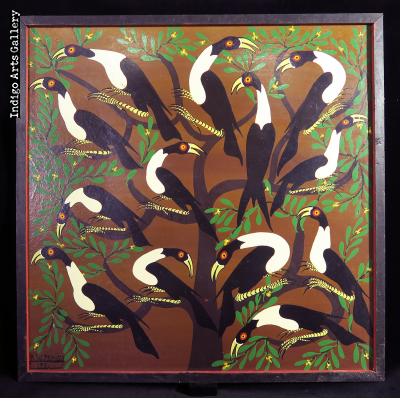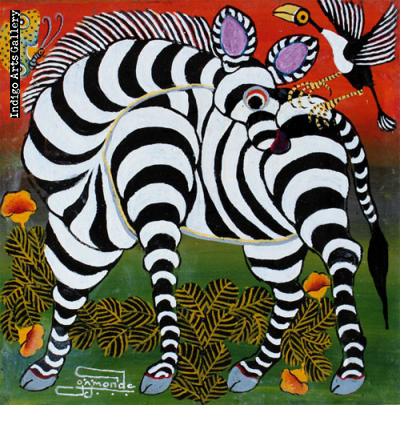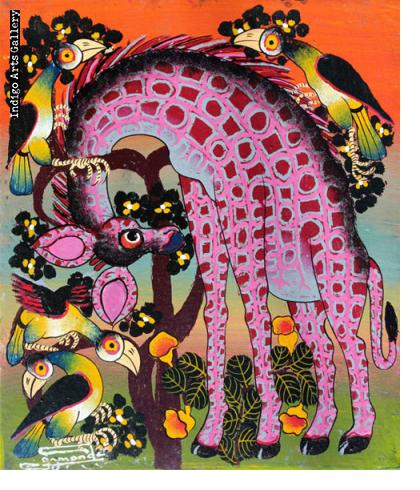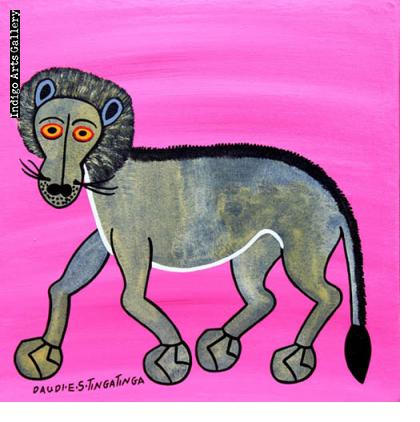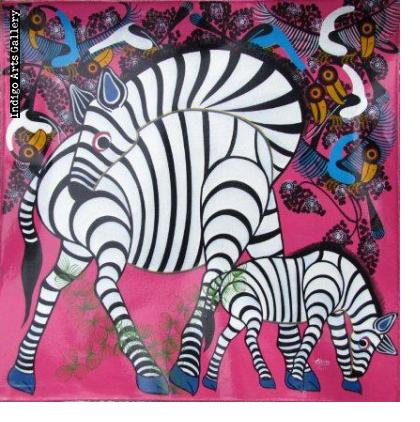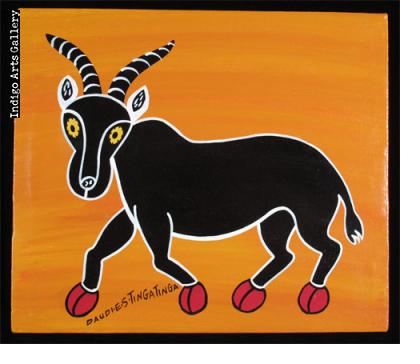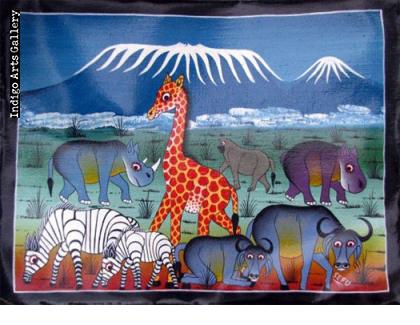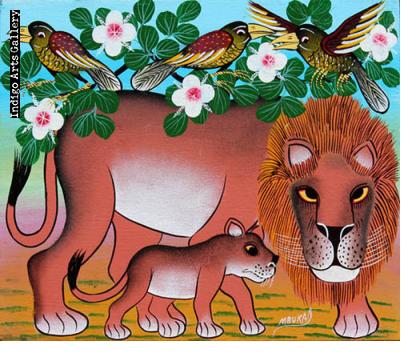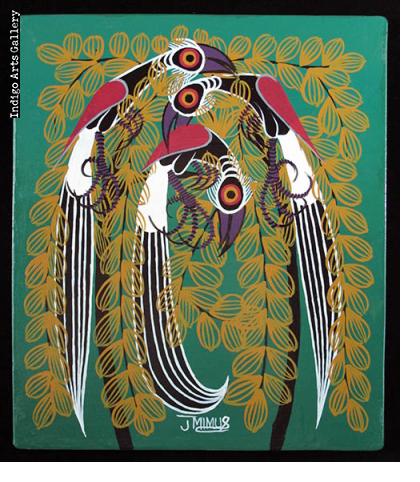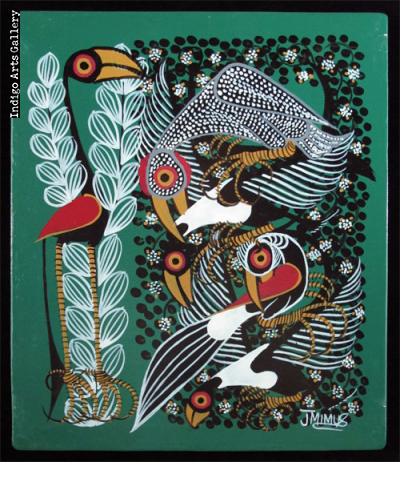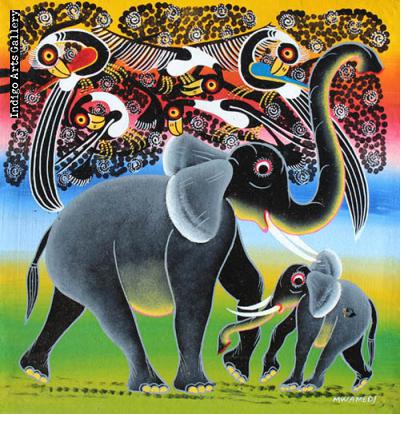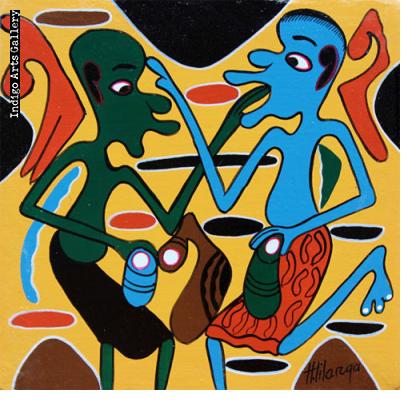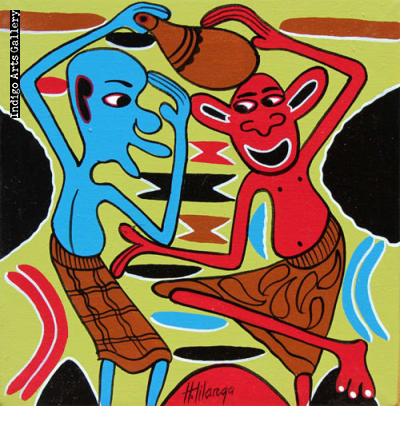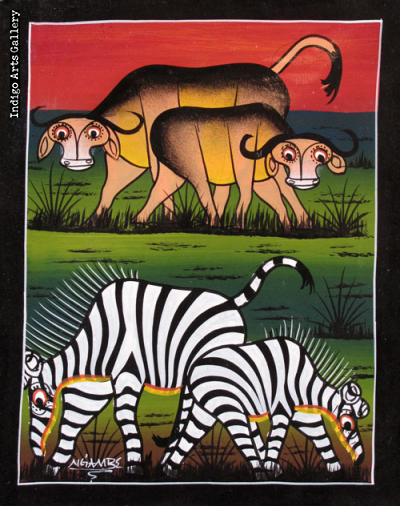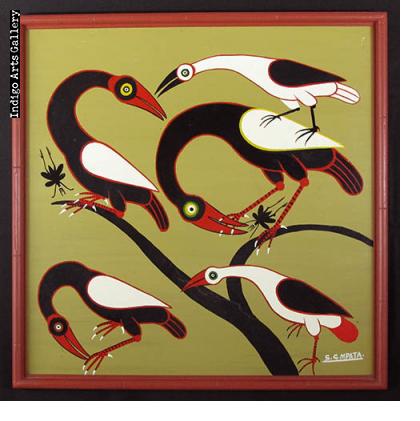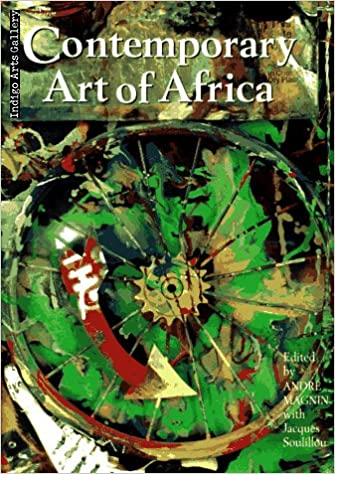Tinga Tinga painting began with Edward Saidi Tingatinga, who was born in 1937 to a family of subsistence farmers in southern Tanzania. In 1953 he traveled to Dar-es-Salaam in search of work and labored at odd jobs in the construction industry until 1961. Impressed by the ease with which western style paintings by Zairian artists sold to tourists he decided to try his hand as a painter. Since he could not afford to purchase art supplies, he began with scavenged materials, painting on discarded ceiling boards using dregs of bicycle enamel, household paint and old paintbrushes. Despite this unpromising beginning, he quickly developed a new and unique artistic style. His colorful, crowded paintings depicted fantastic animals and birds, dancing tribespeople and scenes of village life. His lack of formal training led to a simple, direct and naive approach to natural subjects, lacking in nuance and detail but bursting with exuberant life, whimsy and color.
The paintings sold well and Tingatinga recruited members of his family to copy them. Early Tingatinga paintings show flat, two-dimensional animals painted against a plain background. Each is related to a legend or saying from Tingatinga's Makua tribal culture. Though the subject matter is rural, the painting is a distinctly urban art form, evolved on the streets of Dar-es-Salaam and conceived not as a means of personal expression, but as a method of earning money. With its cheerful subject matter, Tingatinga's art was calculated to appeal to the romantic notions of African life held by tourists.
In 1972, in the midst of a burgeoning artistic career, Edward Tingatinga was shot dead by police in a case of mistaken identity. His fellow artists in Dar formed the Tinga Tinga Arts Cooperative Society in his name, and the style he originated became a school of painting for artists from Dar and Zanzibar. Today, the Tinga Tinga artists working in Dar and Zanzibar produce paintings faithful to the generic Tinga Tinga themes of big game and birds. Zanzibari artists have influenced traditional Tinga Tinga themes, adding fish, monkeys, coconut palms, musical instruments and people. Current Tinga Tinga artists paint on stretched muslin and canvas. Many uphold the tradition of painting only with bicycle enamel. The paintings are popular in Japan, Sweden, Denmark and Switzerland as well as the USA. Most of the artists shown on this web-page are members of the Tinga Tinga Arts Cooperative Society.
(Biography adapted from text by Styche & Associates).
In May through August, 2012 we presented a look at the contemporary art of East Africa, including a collection of Tinga Tinga paintings, with East African Encounters: Contemporary Art from Kenya and Tanzania.
In February 2015 Omary Amonde, the oldest member of the Tinga Tinga Cooperative, and the last remaining artist who had known and learned from E. S. Tingatinga, passed away in Dar es Salaam. Edward Saidi Tingatinga's son, Daudi Tingatinga passed away on May 12th, 2015. In April 2015 we presented the exhibit Tinga Tinga Today: A Tanzanian Popular Art in Transition.

